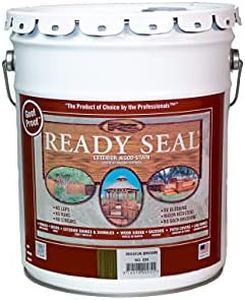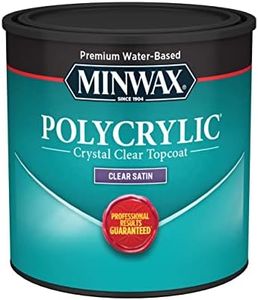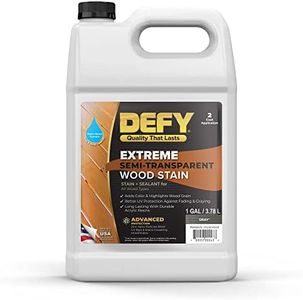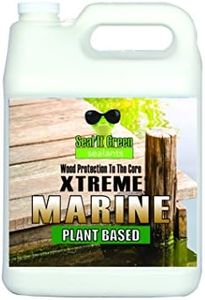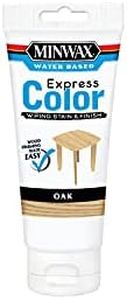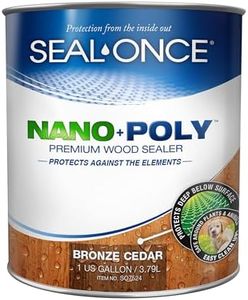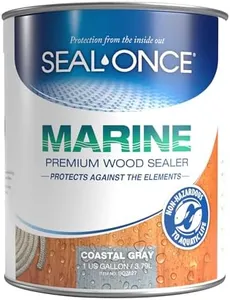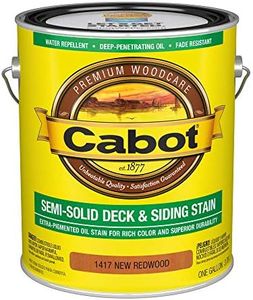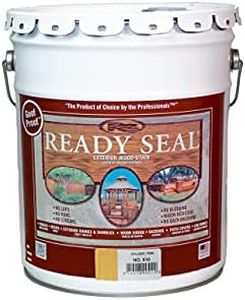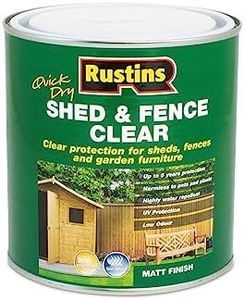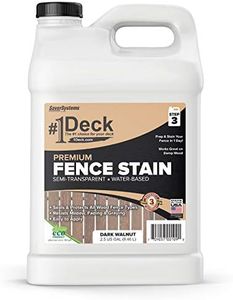We Use CookiesWe use cookies to enhance the security, performance,
functionality and for analytical and promotional activities. By continuing to browse this site you
are agreeing to our privacy policy
10 Best Fence Stains
From leading brands and best sellers available on the web.By clicking on a link to a third party's website, log data is shared with that third party.
Buying Guide for the Best Fence Stains
Choosing the right fence stain is important not only for how your fence looks, but also for how well it is protected against the elements. Fence stains come in a variety of types and opacities, each designed to suit different styles and weather conditions. To make the best choice, think about the look you want, how much time you can spend on maintenance, and the kind of weather your fence will face. Carefully considering a few key properties will help your fence stay strong and beautiful for years.Stain OpacityOpacity refers to how much the stain hides the wood’s natural appearance. Stains range from transparent, which lets the wood grain fully show, to semi-transparent, which gives some color but still highlights grain, to solid, which covers the wood almost like paint and hides most of the grain. If you want a natural look, go with transparent or semi-transparent. If your fence is older or you want more color and protection, solid stains are a good fit.
Base Type (Oil vs Water-Based)The base type tells you whether the stain uses oil or water as its main ingredient. Oil-based stains soak into the wood deeply and often last longer, but they can take more time to dry and need careful cleanup. Water-based stains dry faster, have less odor, and are easier to clean up. If easy application and lower fumes matter, water-based is ideal; if longer-lasting protection is key and you don’t mind a longer process, oil-based is worth a look.
UV ProtectionUV protection in a stain helps to keep the wood from fading and turning gray over time because of sunlight. Stains with added UV protection are especially important for fences that get a lot of direct sun. If your fence is in a sunny area, pick a stain with strong UV shielding to keep the color bright and the wood from aging too quickly.
Mold and Mildew ResistanceSome stains include ingredients that help stop mold and mildew from growing on your fence, which is especially important in areas with a lot of rain or humidity. If your fence is in the shade, near plants, or you live in a damp climate, look for products with mold and mildew resistance to help your fence stay clean and healthy.
Durability and Reapplication IntervalDurability means how long the stain will last before you need to reapply it. Some stains can keep a fence looking good for several years, while others may need to be refreshed more often. Think about how much maintenance you are willing to do; if you want a longer-lasting option, check the stain's stated lifespan and choose one rated for multi-year durability.
Color OptionsFence stains come in a range of colors, from natural wood tones to deep browns, reds, or even grays. The color you pick affects both the appearance and, sometimes, the protection level. Lighter colors generally show more dirt but may reflect more sunlight, while darker colors can hide stains and provide a bolder look. Choose a color that matches your home and landscape, and consider how it will look as it ages.
